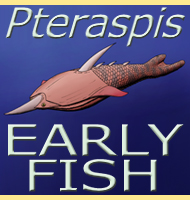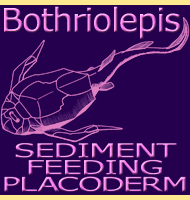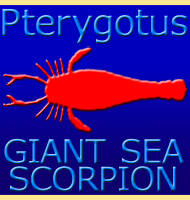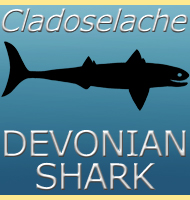


Arandaspis
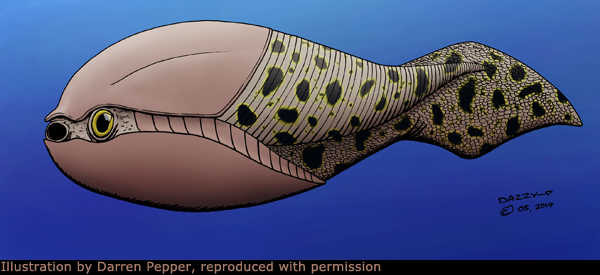
This illustration is available as a printable colouring sheet. Just click here and right click on the image that opens in a new window and save to your computer.
Name:
Arandaspis
(Aranda shield - after the Aboriginal Aranda tribe who live near
where the first discoveries were made).
Phonetic: Ah-rand-as-pis.
Named By: A. Ritchie & J.
Gilbert-Tomlinson - 1977.
Classification: Chordata, Pteraspida,
Arandaspida.
Species: A. prionotolepis
(type).
Diet: Uncertain.
Size: About 15 centimetres long.
Known locations: Australia, New South Wales -
Rowena Formation, Northern Territory - Stairway Sandstone Formation..
Time period: Early/Mid Ordovician.
Fossil representation: Multiple specimens.
Arandaspis
is today one of the better known Ordovician fishes, though its
appearance is not what you might expect. The body of Arandaspis
was
long yet deep, with a single fin extending around the posterior half
of the body. As such Arandaspis is not thought to
have been a
particularly powerful or graceful swimmer, possibly propelling itself
through the water with just a series of rapid yet slight laterally
undulating (side to side) body movements. Arandaspis
also had
two ‘shields’ made from thin bone, the lower being deeper than
the upper. These would have provided support for the body as well as
a degree of protection, but there were still gaps so that features
such as eyes and gills were not obstructed.
Arandaspis
may have been a predator of other much smaller marine organisms.
However the mouth points downwards, suggesting that it may have been
a bottom feeder, either scooping up small bottom dwelling organisms
or particles of organic matter that had fallen to the sea floor.
Although Arandaspis was a jawless fish, it is
still believed to have
had plates inside the mouth that allowed the lips to have been
flexible. To a certain extent this means that Arandaspis
would have
been able to manipulate things into its mouth.
Further reading
- First Ordovician vertebrates from the Southern Hemisphere, A.
Ritchie & J. Gilbert-Tomlinson - 1977.
----------------------------------------------------------------------------
Random favourites
 |
 |
 |
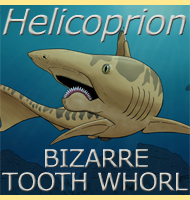 |
